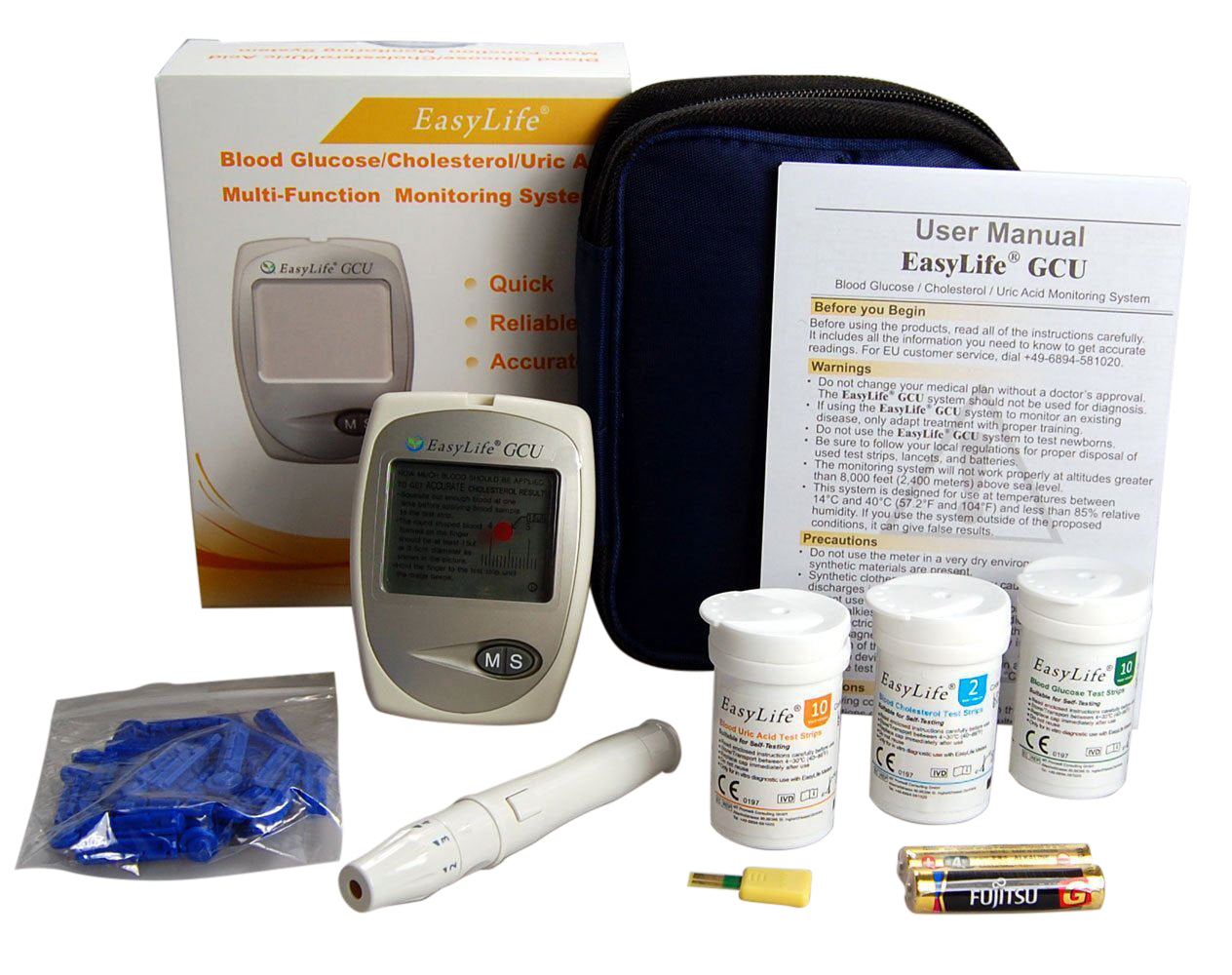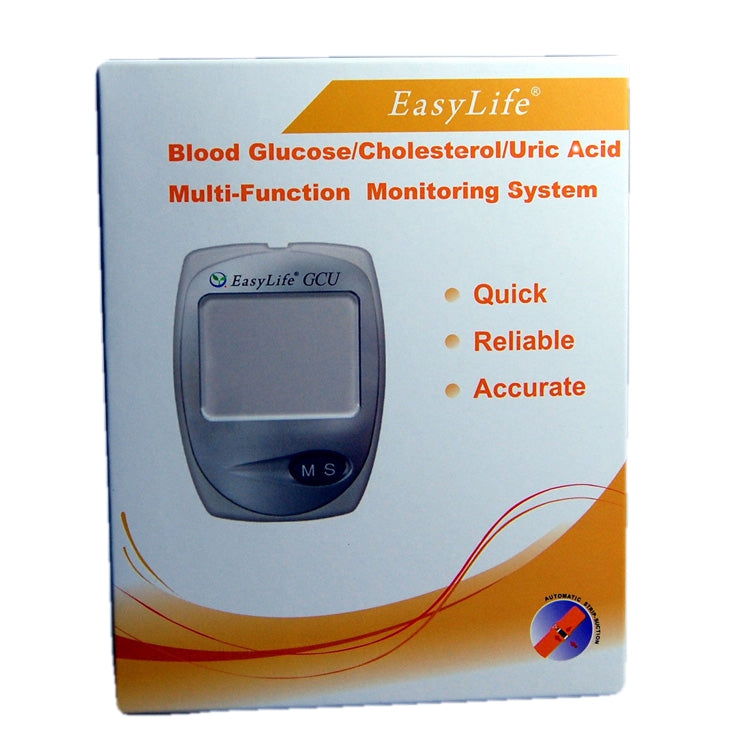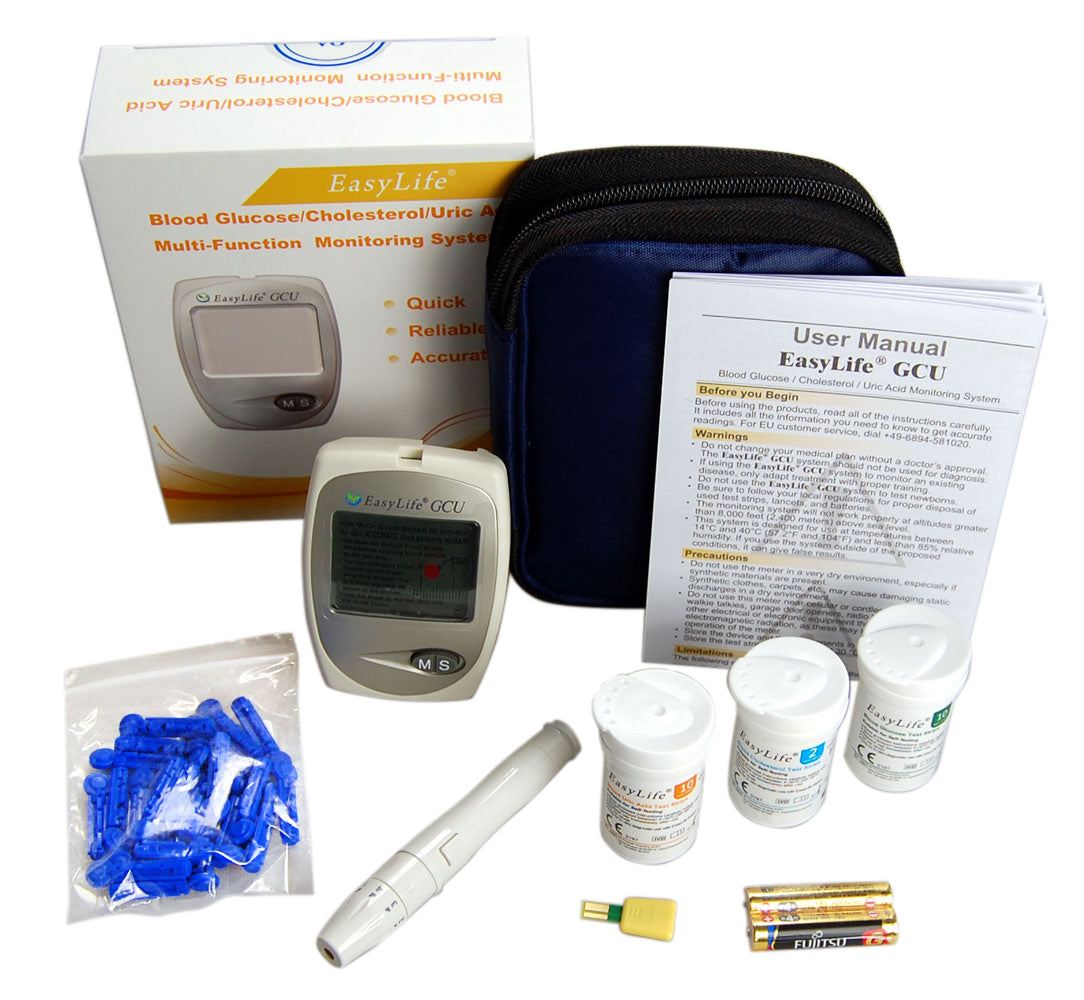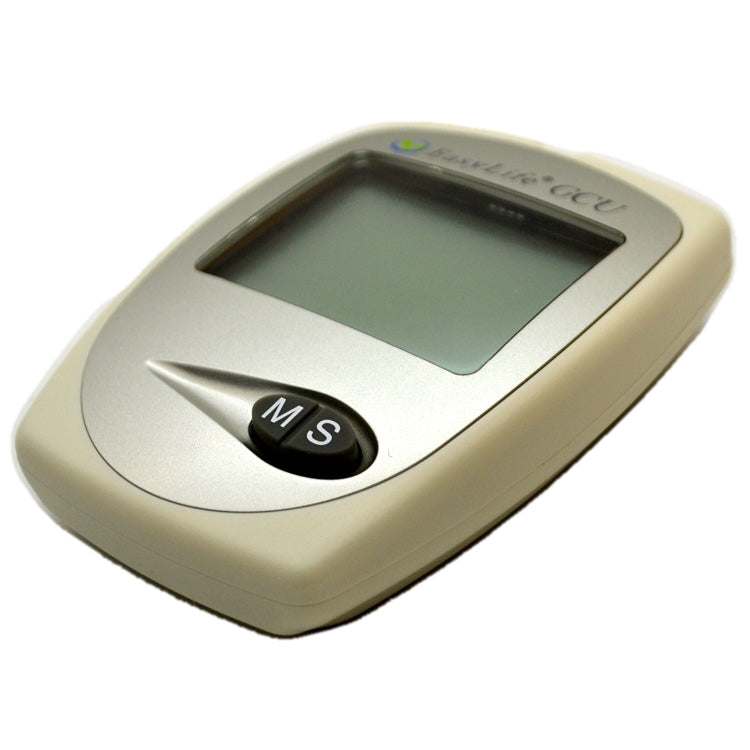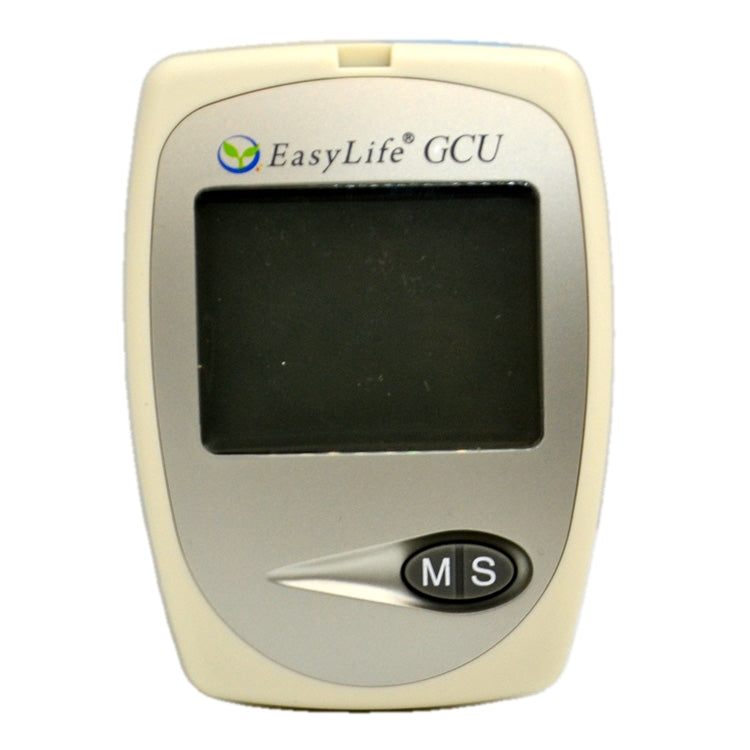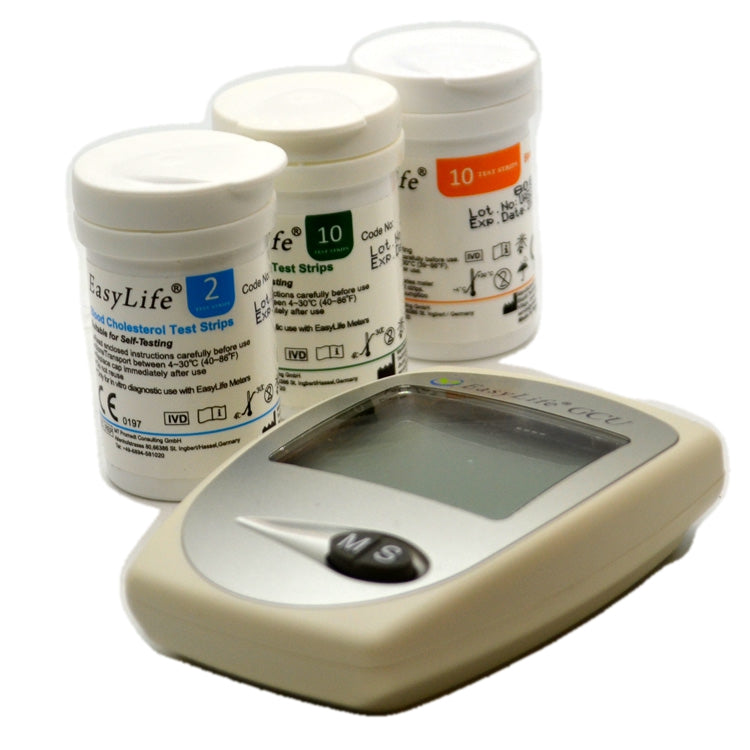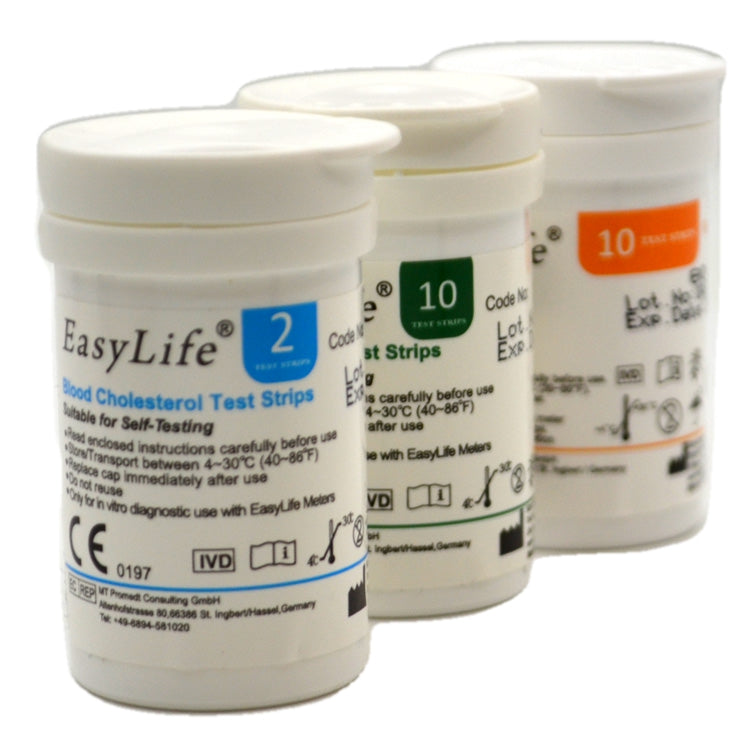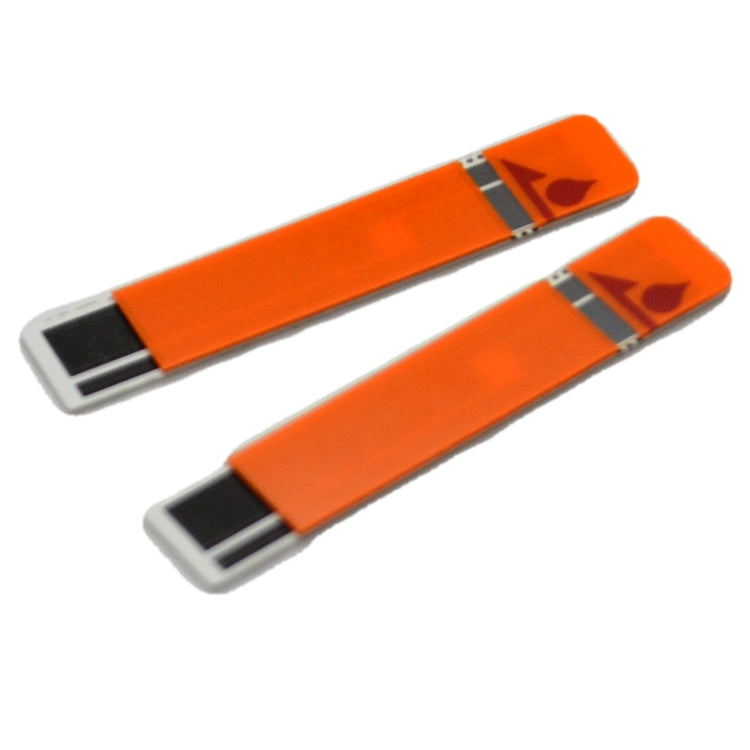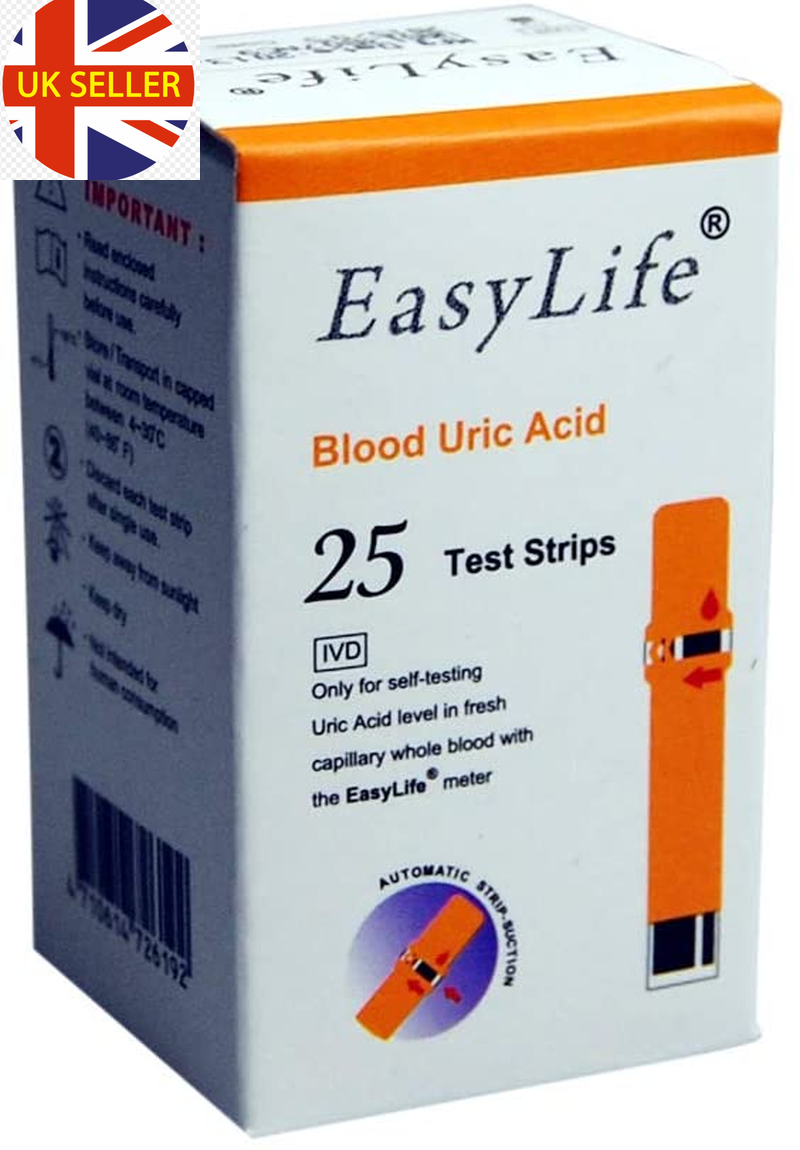Valuemed
EASYLIFE Blood Glucose / Cholesterol / Uric Acid Meter + 25 Uric Acid Test Strips
EASYLIFE Blood Glucose / Cholesterol / Uric Acid Meter + 25 Uric Acid Test Strips
Couldn't load pickup availability
Uric acid test
We have bundled the Easylife 3 in 1 GCU meter (checks glucose, cholesterol and uric acid) with an additional 25 uric acid test strips for those who wish to test and monitor their uric acid levels regularly at home, making it an ideal pack if you have gout. The Easylife meter also has test functions for finger prick blood testing total cholesterol and glucose in addition to uric acid.
Key features of this Easylife uric acid meter bundle
- Complete starter pack allowing 35 uric acid tests plus 2 cholesterol tests and 10 glucose tests.
- Fast easy reliable uric acid test.
- Individual test strips for each test type and low-cost replacement test strips.
- 50-200 test memory.
- Switchable display scales (mmol/l -g/dl etc)
- CE certified for both European clinical self-test and professional use.
- Free UK delivery on this bundle
Uric acid meter bundle contents include:
- Digital Easylife triple meter (Glucose/ Cholesterol /Uric acid)
- Battery
- Instructions for using the meter and test strips to check a finger prick blood sample for uric acid, cholesterol and glucose levels.
- 10 glucose test strips
- 2 cholesterol test strips
- 10 uric acid test strips
- Lancets & lancing device.
- + 25 uric acid test strip refill pack
Watch video showing Easylife meter demonstration, setup and test procedure
Share
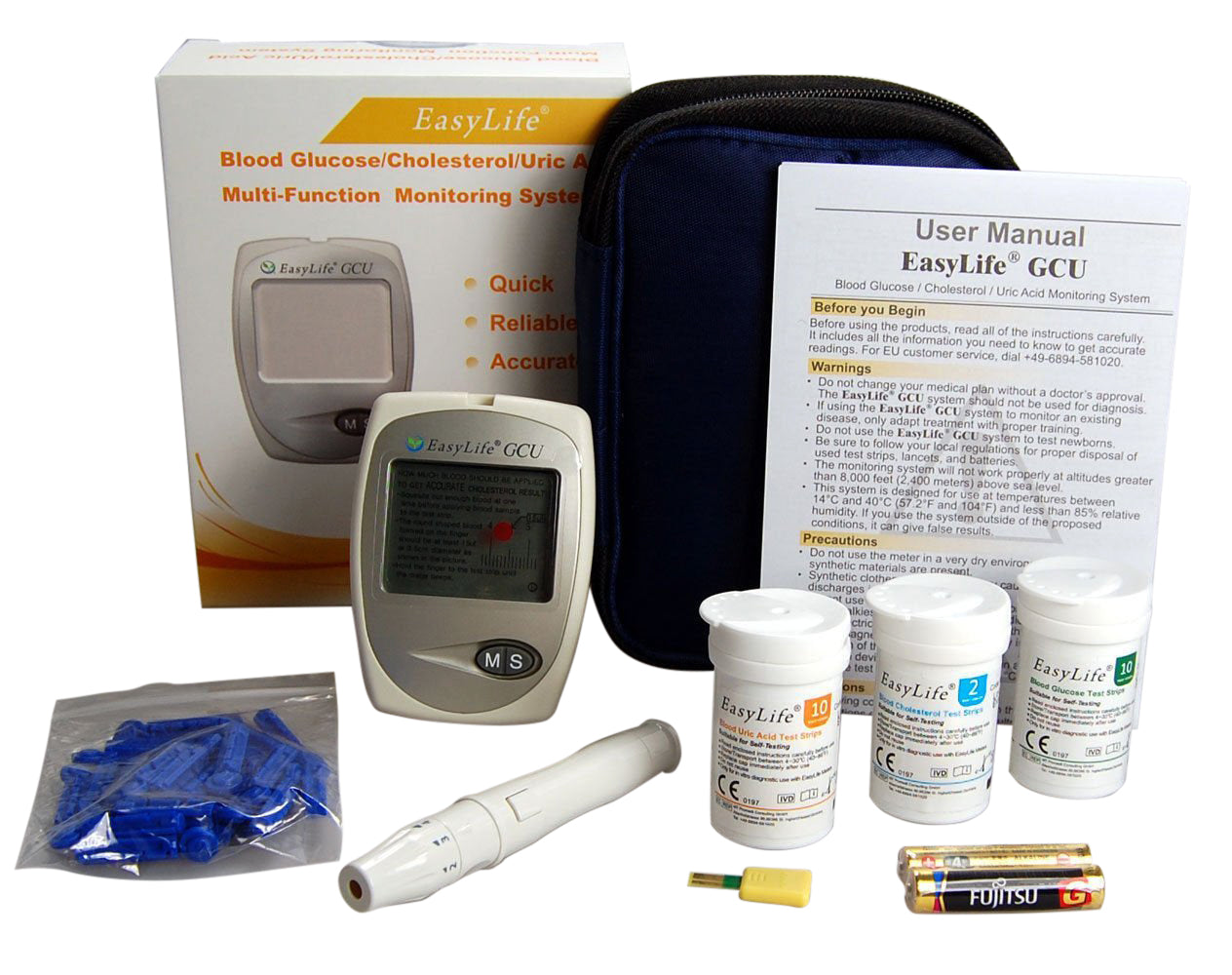
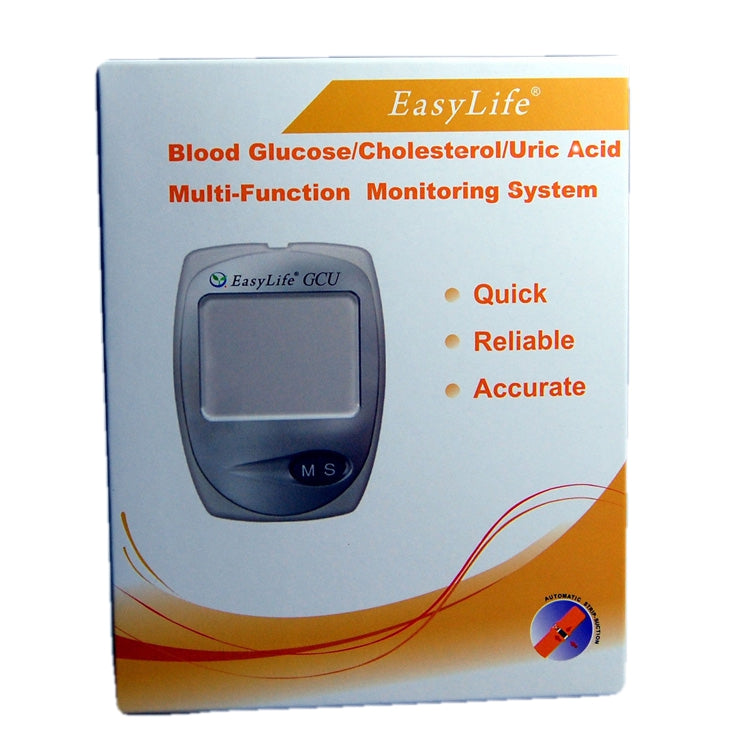
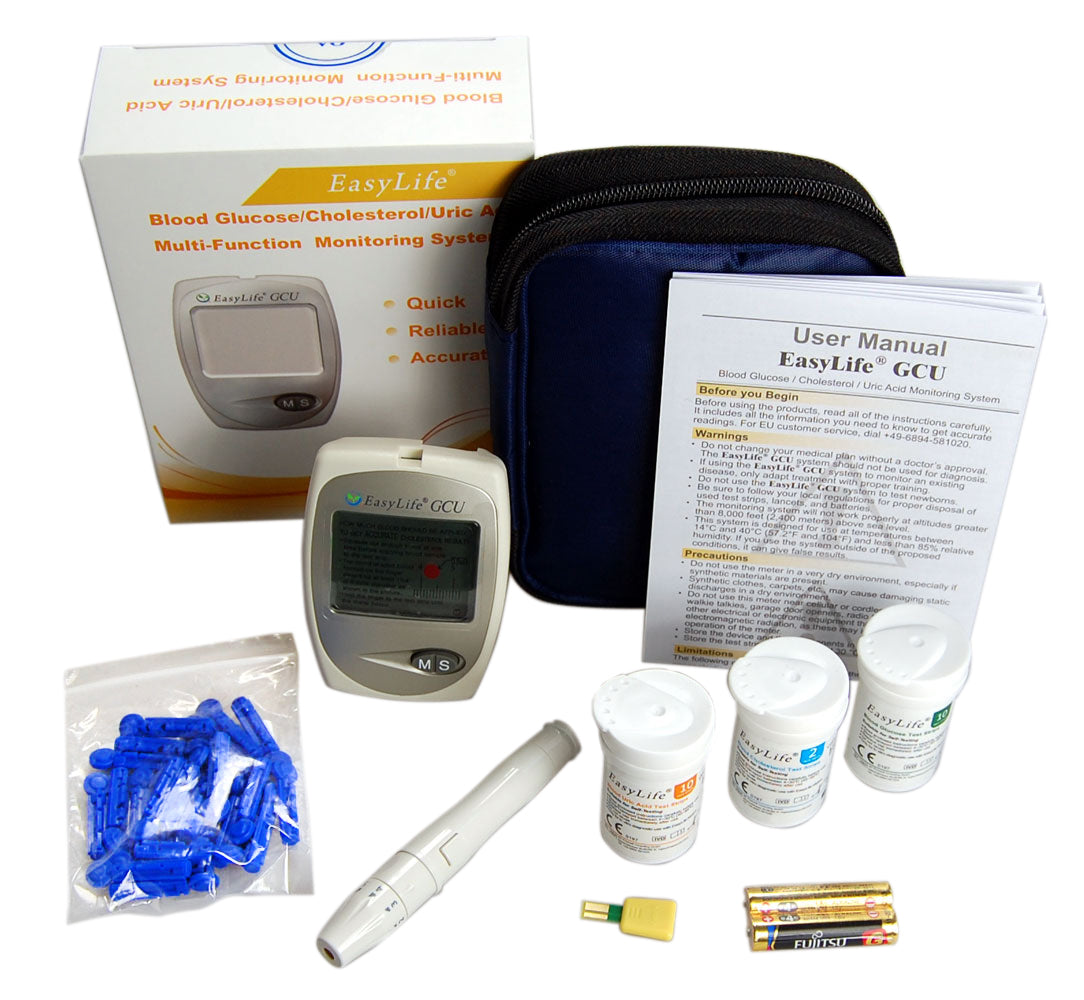
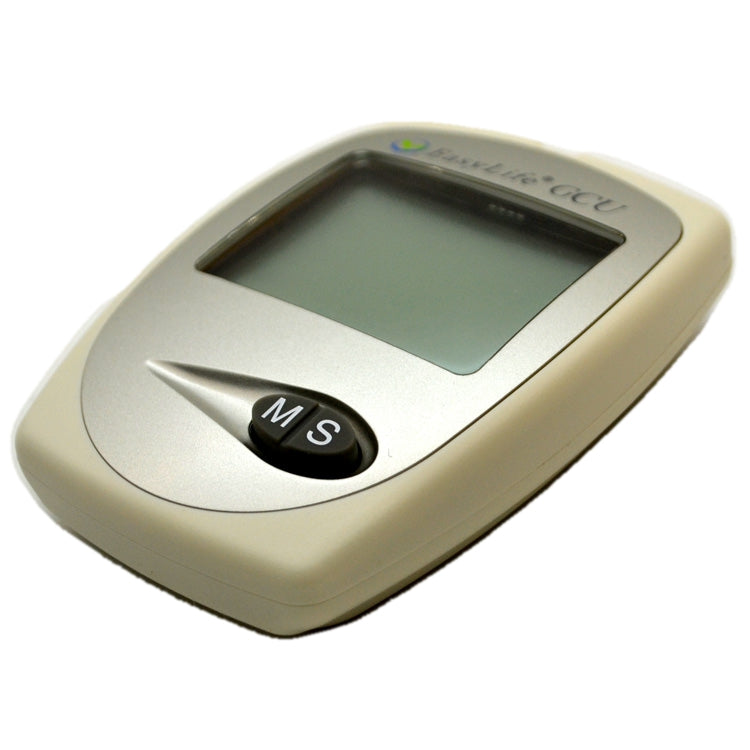
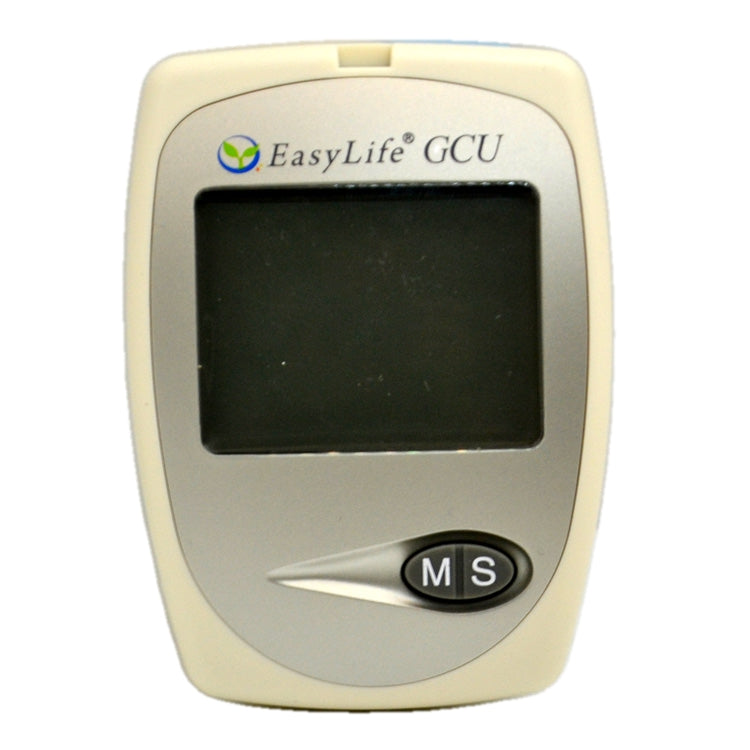
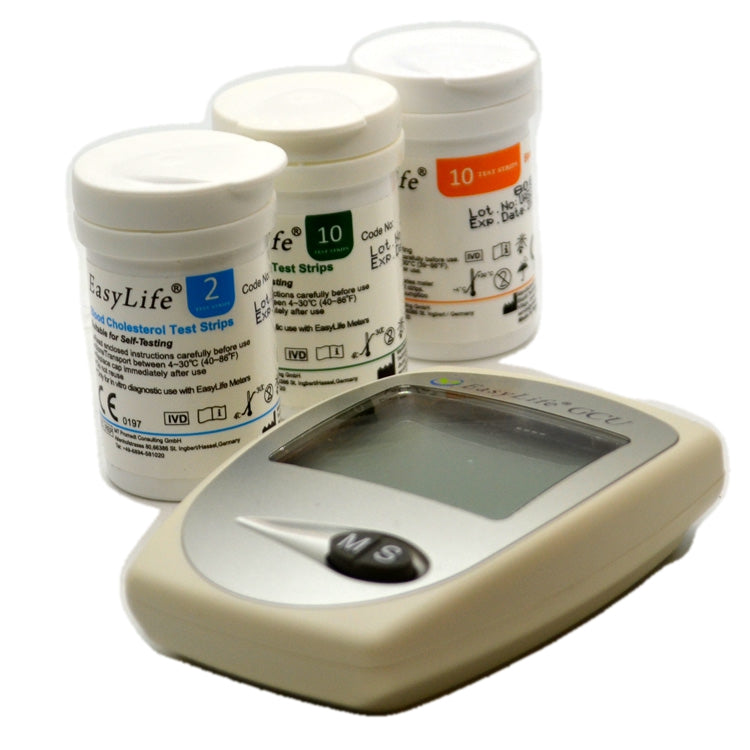
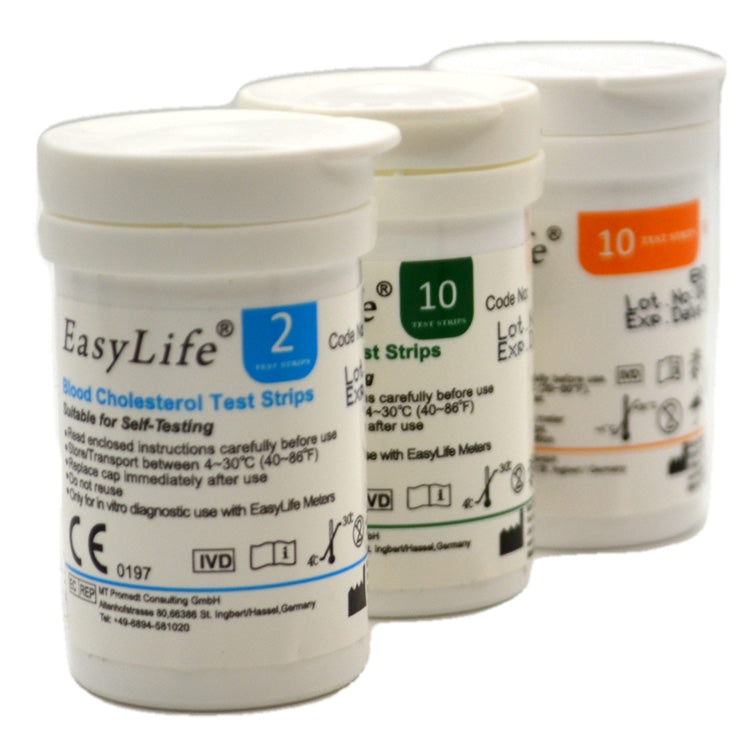
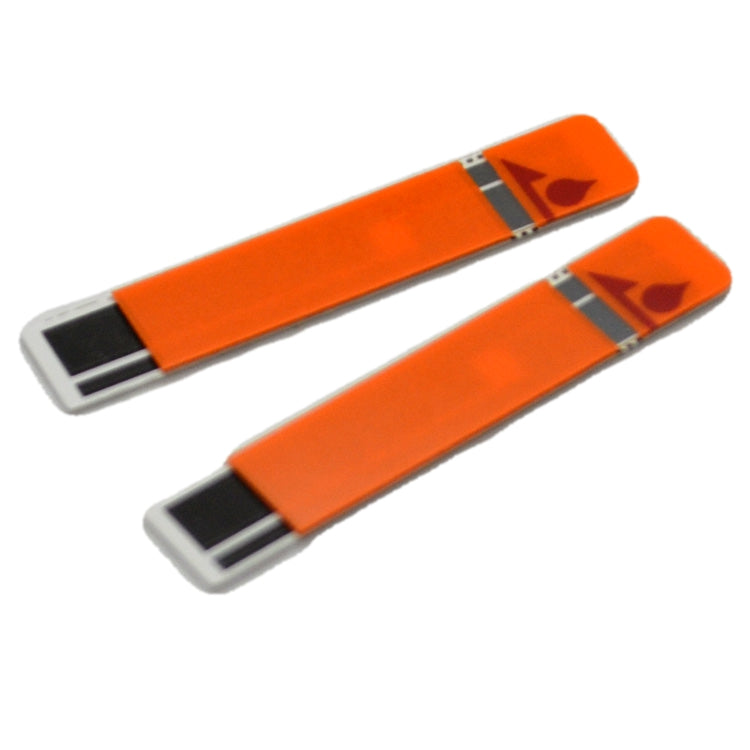
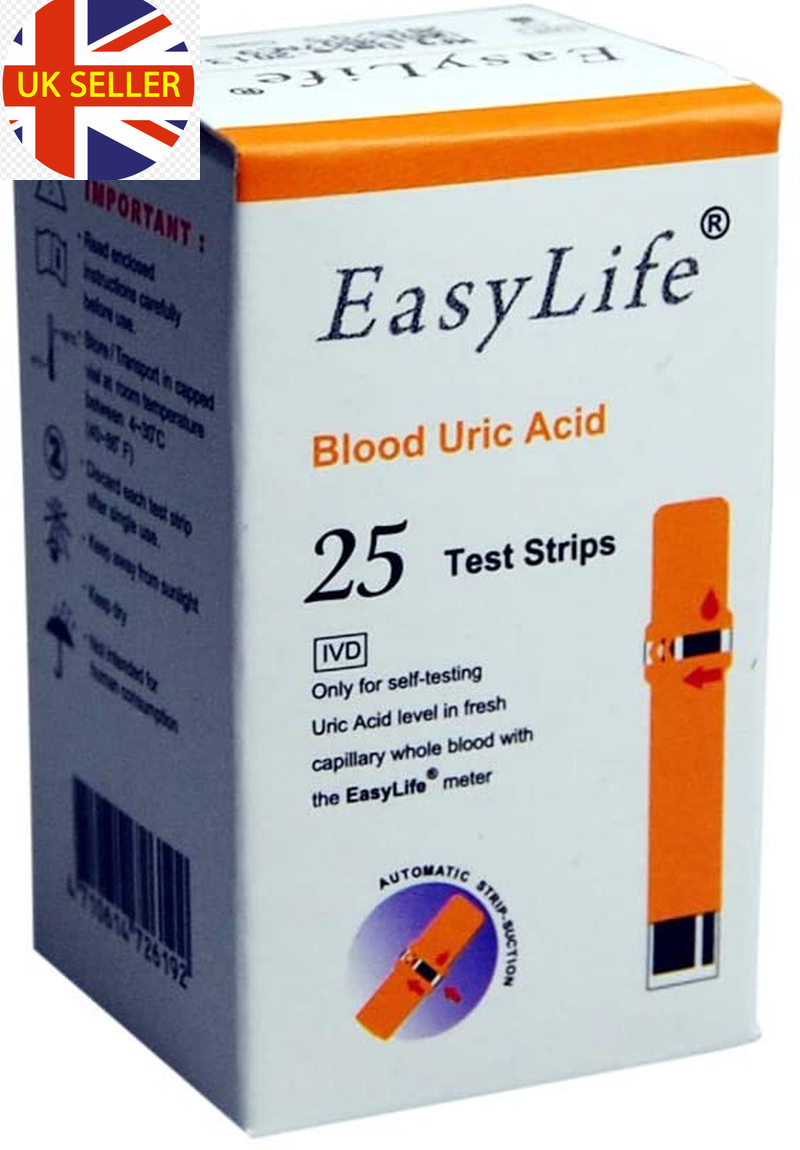
Collapsible content
Can you give me any tips on obtaining the finger prick blood sample?
Obtaining a good finger prick blood sample is crucial to getting accurate results with a home cholesterol test. First, watch the top video above, it shows a great demonstration of exactly how you should be using the lancets and pipettes provided, and the prep needed to perfuse the fingers. You don't squeeze the pipette to fill, just place it in the second drop and it fills itself, only squeeze it to discharge to blood into the sample well on the test device when it's full to the black line.
We have put together out top tips on performing a finger prick blood test to help you here
Can you use a lancet without an auto lancing device?
A lancet can be used alone or with a lancing device. Many people find it easier to obtain a finger prick blood sample if they use the lancet in a lancing device.
Most of our meters are supplied with starter packs of lancets and some with safety lancets. We suggest you continue to use the same lancets recommended by the manufacturer if possible. If you are struggling to get adequate samples move to a thicker lance, ie 21g is thicker than 28g or 30g (the thinnest)
What are normal Uric Acid Levels?
Here are the normal blood ranges for Uric Acid.
Adult Males between 200 – 430 umol/L
Adult Females between 140 – 360 umol/L
Uric acid (urate) is produced during the breakdown of purines and excreted in both urine and faeces. Not everyone with elevated uric acid gets gout, only if crystals form in synovial joints.
Reasons to measure uric Acid
Uric acid can be elevated in pregnancy (uric acid may be measured while investigation/monitoring pre-eclampsia) during chemotherapy and radiotherapy. Uric Acid is also monitored in cases of renal failure and Liver disease resulting from excessive use of alcohol, starvation. Other rarer causes of high uric acid include a high-protein diet and strenuous exercise. Elevated levels are also seen in the rare inherited disorder, Lesch-Nyhan syndrome.
Low uric acid levels also occur in severe liver disease, low protein diet, heavy metal poisoning, Wilson's disease, and some cancers.
Some drugs will affect uric acid levels. These include, raised levels caused by thiazide diuretics, theophylline and low-dose aspirin;
Low blood Uric Acid levels can occur with high-dose aspirin, corticosteroids, and allopurinol.
Does high uric acid levels run in families?
Yes, there is a genetic component to high uric acid levels, and the risk of hyperuricemia (elevated uric acid in the blood) and gout tends to run in families. If one or more close relatives, such as parents or siblings, have a history of gout or elevated uric acid, your risk of experiencing similar issues may be higher.
Genetics can influence how the body processes and eliminates uric acid. Variations in genes related to purine metabolism and uric acid excretion by the kidneys can contribute to the development of hyperuricemia. However, it's important to note that genetics is just one factor, and environmental factors, diet, lifestyle choices, and overall health also play crucial roles.
If there is a family history of gout or hyperuricemia, it may be wise to be proactive in managing lifestyle factors that can influence uric acid levels. This includes maintaining a healthy weight, staying hydrated, avoiding excessive alcohol consumption, and making dietary choices that minimise the intake of purine-rich foods.
Why is my uric acid high but I have no gout symptoms?
Elevated uric acid levels without the presence of gout symptoms is a situation known as hyperuricemia. Hyperuricemia occurs when there is an excess of uric acid in the blood. While gout is one of the conditions associated with high uric acid levels, not everyone with elevated uric acid will develop gout.
It's important to note that even without gout symptoms, persistently high uric acid levels may have implications for long-term joint health and could potentially contribute to other health issues. Regular monitoring and consultation with a healthcare professional are recommended, especially if you have risk factors for gout or other related conditions.
Are uric acid home tests accurate?
This home uric acid test meter and strips is 97% accurate when compared to a laboratory uric acid. The meter tests a small blood sample obtained from a finger prick, to measure uric acid levels, whereas a laboratory test performed by your doctor will usually be done on a larger blood sample, obtained by venepuncture. The lab uric acid tests will usually be more comprehensive as the test is performed on a much larger blood sample, so it is still worth having your levels checked with your doctor from time to time.
Can I check my uric acid level at home?
It's now possible to check your uric acid levels at home using commercially available uric acid test kits and a meter. It's important to note that these uric acid tests may not be as comprehensive as those conducted in a clinical laboratory, but they are a very useful tool to monitor your uric acid levels.
How do you lower uric acid levels naturally?
Lowering uric acid levels naturally involves making lifestyle and dietary changes. Here are some tips that may help reduce uric acid levels:
- Hydration: Drink plenty of water to help flush out uric acid from the body. Aim for at least 8 glasses (64 ounces) of water per day, and more if you are physically active or live in a hot climate.
- Limit purine-rich foods: Reduce intake of foods high in purines, such as organ meats, seafood (especially anchovies and sardines), red meat, and certain vegetables (like asparagus and spinach). Instead, focus on a well-balanced diet that includes a variety of fruits, vegetables, whole grains, and lean proteins.
- Cherries: Some studies suggest that cherries and cherry juice may help lower uric acid levels. Consider incorporating fresh cherries or unsweetened cherry juice into your diet.
- Berries: Include berries like strawberries, blueberries, and blackberries in your diet. They are rich in antioxidants and may have anti-inflammatory effects.
- Low-fat dairy: Consuming low-fat dairy products, such as milk, yogurt, and cheese, may help lower uric acid levels. The proteins in dairy may have a protective effect against gout.
- Vitamin C: Foods rich in vitamin C, such as citrus fruits, bell peppers, and strawberries, may help lower uric acid levels. Consider incorporating these foods into your diet or taking a vitamin C supplement after consulting with a healthcare professional.
- Coffee: Some studies suggest that moderate coffee consumption may be associated with a lower risk of gout. However, individual responses can vary, and excessive caffeine intake should be avoided.
- Maintain a healthy weight: Losing excess weight can help lower uric acid levels. However, avoid crash diets, as rapid weight loss can temporarily increase uric acid levels.
- Limit alcohol: Alcohol, especially beer, has been linked to higher uric acid levels. Limit alcohol consumption or avoid it altogether, particularly if you have gout.
- Regular exercise: Engage in regular physical activity to help maintain a healthy weight and improve overall well-being. However, avoid intense exercise during gout flares.
Are there any foods that can reduce uric acid levels in the blood?
If you're looking to reduce uric acid levels, incorporating certain foods into your diet and adopting a healthy lifestyle can be beneficial. Here are some foods and dietary practices that may help lower uric acid levels:
- Cherries: Some studies suggest that cherries and cherry juice may help reduce uric acid levels and decrease the frequency of gout attacks.
- Berries: Berries, such as strawberries, blueberries, and blackberries, are rich in antioxidants and may have anti-inflammatory effects.
- Apples: Apples contain malic acid, which may help neutralise uric acid and contribute to its elimination from the body.
- Citrus fruits: Citrus fruits like oranges, lemons, and grapefruits contain vitamin C, which may help lower uric acid levels.
- Low-fat dairy products: Low-fat dairy, such as milk, yogurt, and cheese, may help lower uric acid levels. Some studies suggest that the proteins in dairy products may have a protective effect against gout.
- Vegetables: Most vegetables are low in purines, and some, like kale, cabbage, and broccoli, may have anti-inflammatory properties.
- Whole grains: Foods like whole wheat, brown rice, and oats are high in fiber and may help regulate uric acid levels.
- Water: Staying well-hydrated is crucial for flushing out uric acid from the body. Aim to drink plenty of water throughout the day.
- Coffee: Some studies suggest that moderate coffee consumption may be associated with a lower risk of gout. However, individual responses can vary.
- Herbs and spices: Some herbs and spices, such as turmeric and ginger, have anti-inflammatory properties and may be beneficial.
What foods increase uric acid levels in the blood?
Certain foods are known to be high in purines, which can increase the levels of uric acid in the blood. High levels of uric acid can contribute to conditions like gout. It's important to note that individual responses to specific foods can vary, and not everyone will be affected in the same way. Here are some foods that are generally considered to be high in purines:
- Organ meats: Liver, kidneys, and other organ meats tend to be high in purines.
- Certain seafood: Some types of seafood are rich in purines. Examples include anchovies, sardines, mussels, scallops, and trout.
- Red meat: Beef, lamb, and pork can contribute to higher purine levels.
- Game meats: Meats from game animals like venison and rabbit can be high in purines.
- Processed meats: Certain processed meats, such as hot dogs and sausages, may contain higher levels of purines.
- Alcohol: Beer and spirits, especially beer, have been associated with an increased risk of gout due to their purine content.
- Certain vegetables: While most vegetables are low in purines, some high-purine vegetables include asparagus and spinach. However, the purine content in vegetables is generally lower compared to meat and seafood.
How do you prepare for a uric acid blood test?
No special preparation is required for a uric acid test. You do not need to fast and it can be done at any time of day.

